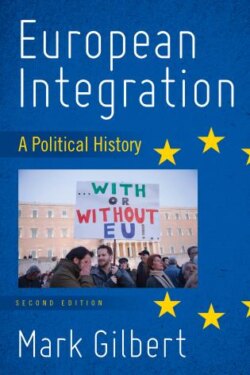Читать книгу European Integration - Mark Gilbert - Страница 10
На сайте Литреса книга снята с продажи.
1960s
ОглавлениеMay 3, 1960: EFTA formed by Austria, Denmark, Great Britain, Norway, Portugal, Sweden, and Switzerland.
July–August 1961: Britain, Denmark, and Ireland apply for EEC membership.
November 2, 1961: Plan for an “indissoluble Union of States” presented by the French government.
January 14, 1962: Agreement on CAP reached. Second stage of EEC begins.
January 14, 1963: De Gaulle’s press conference opposing British membership.
January 22, 1963: Franco-German pact of friendship signed in Paris.
January 28, 1963: France vetoes British membership.
July 20, 1963 : Association agreement signed with eighteen African states at Yaoundé (Cameroon).
March 31, 1965: The Commission presents its proposals regarding the EEC’s “own resources” and the budget question.
April 8, 1965: Merger treaty signed. ECSC, EEC, and Euratom are fused into the EC.
July 6, 1965: Empty Chair Crisis begins. France boycotts the Community.
September 9, 1965: De Gaulle casts doubt on future of EEC if national veto not preserved.
January 28–29, 1966: Luxembourg compromise agreed. France retakes her place at the table.
May 1, 1967: Wilson government formally applies for British membership.
June 30, 1967: The Commission signs the Kennedy Round trade deal on behalf of the Six.
July 6, 1967: Jean Rey (Belgium) becomes second president of the EC Commission.
November 27, 1967: De Gaulle blocks British membership.
July 1, 1968: Customs union begins, eighteen months ahead of the schedule anticipated in the EEC treaty.
December 1–2, 1969: The Hague summit of EC leaders.
